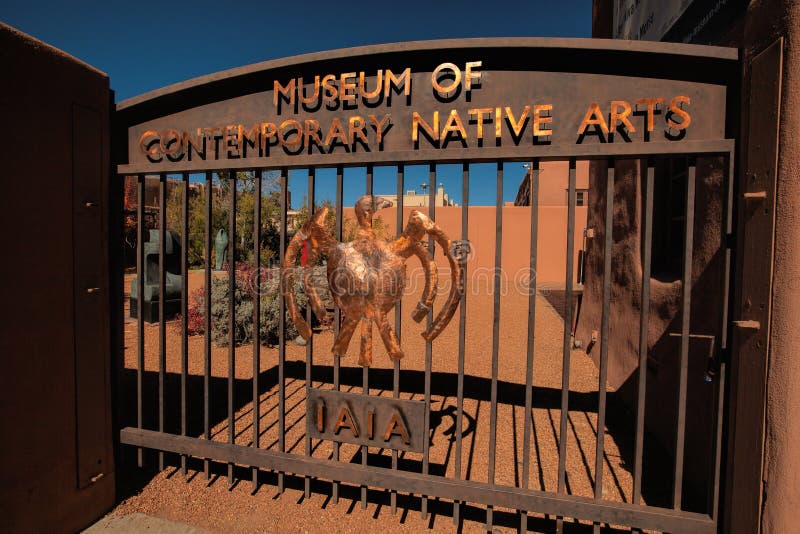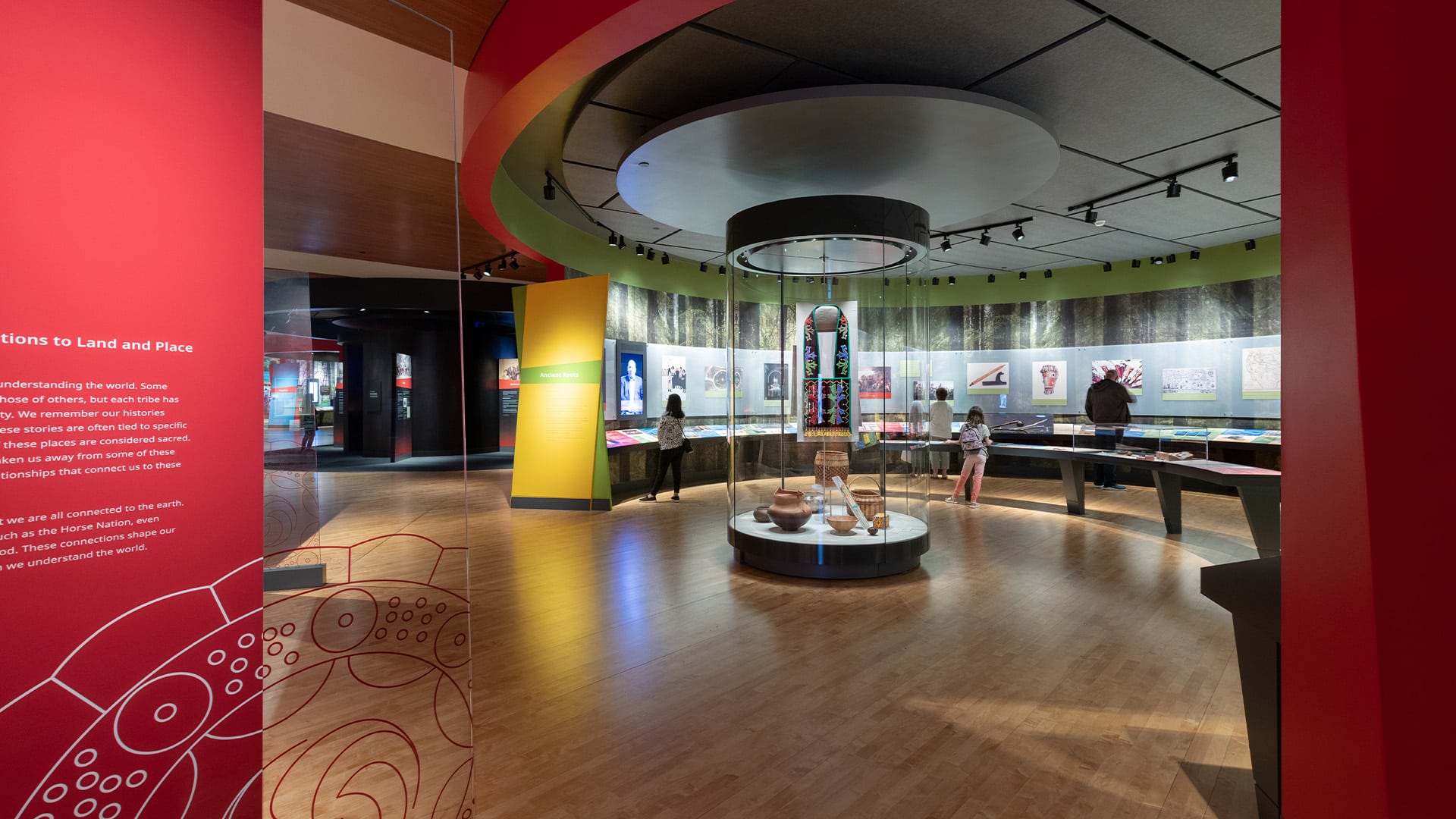
The Evolving Canvas: Native American Museums and the Integration of Modern Indigenous Art
Abstract: This article explores the transformative integration of modern Indigenous art within Native American museums, a phenomenon that significantly redefines their institutional mandates and public perception. Historically, such museums, often products of colonial ethnography, presented Indigenous cultures as static, past-tense, and primarily through an external lens. The advent of Indigenous self-determination movements and a burgeoning contemporary art scene has catalyzed a paradigm shift, where museums are increasingly embracing modern Indigenous artistic expressions. This integration challenges antiquated narratives, asserts cultural dynamism, fosters self-representation, and creates vital spaces for dialogue on identity, sovereignty, and contemporary issues, thereby repositioning these institutions as dynamic centers for living cultures rather than mere repositories of historical artifacts.
1. Introduction: From Static Relic to Living Culture
Native American museums have long served as critical sites for the preservation and interpretation of Indigenous cultures. However, their historical trajectory has been fraught with complex ethical and representational challenges. Originating largely from the anthropological and ethnographic impulses of the late 19th and early 20th centuries, many institutions inadvertently perpetuated a "vanishing race" narrative, often presenting Indigenous peoples and their cultural output as relics of a bygone era. Objects were frequently decontextualized, labeled as "artifacts," and interpreted through a predominantly non-Indigenous gaze, reinforcing colonial power structures and academic hegemonies.

In recent decades, a profound re-evaluation of museological practices has taken root, driven by Indigenous scholars, artists, activists, and community members. Central to this transformation is the deliberate and expansive integration of modern Indigenous art. This strategic shift is not merely an aesthetic update but a fundamental re-conceptualization of what a Native American museum can and should be. By showcasing contemporary artistic expressions, these institutions are moving beyond their historical roles as ethnographic archives to become dynamic platforms for Indigenous self-representation, cultural revitalization, and critical engagement with pressing social and political issues. This article delves into the historical context, the characteristics of modern Indigenous art, the methods and implications of its integration, and the ongoing challenges and future directions for Native American museums in this evolving landscape.
2. Historical Context: The Museum as a Colonial Construct
To understand the significance of modern art’s integration, it is crucial to acknowledge the colonial foundations upon which many Native American collections were built. Early museums and their collecting practices were deeply intertwined with the expansion of colonial powers, often acquiring objects through exploitative means, including grave desecration, forced sales, and cultural appropriation. The "ethnographic gaze" objectified Indigenous peoples, reducing their complex societies to a series of material culture classifications. Exhibits typically emphasized "traditional" forms, often defining "authenticity" by pre-contact or early-contact periods, thus inadvertently denying Indigenous cultures their capacity for evolution, adaptation, and innovation.
Furthermore, interpretation was almost exclusively controlled by non-Indigenous curators and scholars, leading to narratives that were often misinformed, stereotypical, or outright prejudiced. Indigenous voices were largely absent, both in the curatorial process and in the public reception of their own cultural heritage. This historical context of dispossession, misrepresentation, and epistemological violence forms the backdrop against which the current efforts to decolonize and indigenize museum spaces must be understood.
3. The Rise of Indigenous Self-Determination and Museum Transformation
The latter half of the 20th century witnessed a powerful surge in Indigenous self-determination movements across North America, profoundly impacting the museum sector. The American Indian Civil Rights Movement, the Red Power movement, and subsequent legislative actions like the Native American Graves Protection and Repatriation Act (NAGPRA) of 1990 in the United States, and similar policies in Canada, compelled museums to confront their colonial legacies. These movements demanded not only the return of ancestral remains and sacred objects but also a fundamental shift in institutional power dynamics, advocating for Indigenous control over the interpretation and representation of their own cultures.
This era marked the emergence of Indigenous-led institutions, such as the National Museum of the American Indian (NMAI) in Washington, D.C., which from its inception sought to embody a different museological philosophy, emphasizing Indigenous perspectives, community collaboration, and cultural sovereignty. Even long-established non-Indigenous museums began to engage in more inclusive practices, hiring Indigenous staff, collaborating with tribal communities, and rethinking their exhibition methodologies. This critical period laid the groundwork for a more expansive understanding of Indigenous culture, one that could embrace both historical continuity and contemporary expression.
4. Modern Indigenous Art: Defining its Scope and Characteristics
Modern Indigenous art, often referred to as contemporary Indigenous art, represents a vibrant and diverse field that extends far beyond traditional forms and techniques. It is characterized by its dynamic engagement with both Indigenous cultural heritage and global contemporary art movements. Unlike the ethnographic "artifacts" of historical collections, modern Indigenous art is created by living artists who navigate complex identities at the intersection of their ancestral traditions, colonial legacies, and modern globalized societies.

Key characteristics include:
- Diverse Media and Forms: Artists utilize a vast array of media, including painting, sculpture, photography, video art, performance art, installation art, digital media, and mixed media. This rejection of medium-specific limitations underscores its contemporary relevance.
- Thematic Richness: Modern Indigenous art explores a wide range of themes, including:
- Identity and Self-Representation: Challenging stereotypes, asserting individual and collective identities, and exploring hybridity.
- Land and Environment: Connecting to ancestral lands, addressing environmental degradation, and advocating for ecological stewardship.
- Sovereignty and Decolonization: Critiquing colonial histories, asserting political and cultural self-determination, and envisioning decolonized futures.
- Trauma and Healing: Addressing historical trauma, residential school legacies, and pathways to healing and resilience.
- Cultural Continuity and Innovation: Demonstrating the living nature of Indigenous cultures, adapting traditional aesthetics and narratives to contemporary contexts.
- Social Commentary: Engaging with contemporary social issues such as poverty, racism, urban Indigenous experiences, and global interconnectedness.
- Engagement with Indigenous Epistemologies: Often drawing upon Indigenous knowledge systems, storytelling traditions, and spiritual beliefs, infusing works with culturally specific meanings and perspectives.
- Political and Activist Dimensions: Many works are inherently political, serving as powerful tools for advocacy, protest, and raising awareness about Indigenous rights and issues.
This artistic movement is not monolithic but rather a rich tapestry reflecting the hundreds of distinct Indigenous nations, languages, and cultural practices across North America and beyond. It asserts that Indigenous cultures are not static entities but continually evolving, adapting, and responding to the world around them.
5. Integrating Modern Art: A Paradigm Shift in Museology
The integration of modern Indigenous art into Native American museums signifies a profound paradigm shift in museological practice. This move is driven by several critical objectives:
- Challenging the "Static" Narrative: By exhibiting contemporary works alongside historical collections, museums effectively dismantle the outdated notion that Indigenous cultures are confined to the past. It visually demonstrates the dynamism, resilience, and ongoing vitality of Indigenous peoples.
- Fostering Self-Representation and Voice: Modern Indigenous art provides a direct platform for Indigenous artists to articulate their own perspectives, experiences, and visions. This allows for multivocal narratives, moving beyond external interpretations and empowering Indigenous communities to tell their own stories.
- Decolonizing Exhibition Practices: The inclusion of modern art often necessitates a re-evaluation of curatorial methodologies. It encourages collaborative curatorial models, where artists and communities are integral to the exhibition development process, ensuring culturally appropriate and respectful presentations.
- Engaging New Audiences and Dialogue: Contemporary art often resonates with a broader and younger audience, facilitating engagement with complex Indigenous issues in accessible and thought-provoking ways. It fosters intergenerational dialogue within Indigenous communities and cross-cultural understanding with non-Indigenous visitors.
- Contextualizing Historical Collections: Modern art can provide contemporary commentary on historical objects, drawing connections between past and present struggles, triumphs, and cultural practices. This juxtaposition creates a richer, more nuanced interpretive experience.
Methods of integration vary, from dedicated contemporary art galleries within established museums (e.g., Heard Museum, Eiteljorg Museum) to temporary exhibitions, artist residencies, and performances. Some institutions, like the NMAI, were designed from their inception to prioritize contemporary Indigenous voices and artistic expressions, seamlessly weaving them into their overarching narrative of cultural continuity and resilience. Others strategically juxtapose historical artifacts with contemporary art, creating a powerful dialogue across time and challenging viewers to reconsider their understanding of Indigenous heritage.
6. Challenges and Future Directions
Despite the transformative progress, the integration of modern Indigenous art within museums is not without its challenges. Issues such as funding for contemporary art acquisitions and exhibitions, the ongoing need for greater Indigenous representation in curatorial and leadership roles, and navigating the complexities of "authenticity" and cultural protocols continue to require attention. There can also be an institutional tension between the traditional role of preserving historical collections and the dynamic, often provocative nature of contemporary art.
Looking ahead, the trajectory for Native American museums engaging with modern Indigenous art is one of continued evolution and deepening commitment. Future directions include:
- Expanding Global Indigenous Dialogues: Connecting with Indigenous artists and institutions worldwide to foster cross-cultural exchange and understanding of shared experiences of colonialism and decolonization.
- Embracing Digital Platforms: Utilizing digital technologies for virtual exhibitions, online artist talks, and interactive educational resources to reach broader audiences and enhance accessibility.
- Further Decolonization of Collections and Interpretation: Moving beyond simply adding contemporary art to actively re-interpreting existing collections through Indigenous epistemologies and addressing the problematic histories of acquisition.
- Community-Led Initiatives: Empowering Indigenous communities to take even greater ownership of exhibition content, design, and programming, ensuring that museums truly serve as extensions of their cultural aspirations.
7. Conclusion
The integration of modern Indigenous art into Native American museums represents a pivotal moment in the history of these institutions. It signifies a decisive break from the colonial paradigms of the past, embracing a future where Indigenous cultures are recognized as living, dynamic, and continually evolving forces. By providing platforms for contemporary artistic expression, these museums are not merely showcasing art; they are fostering cultural sovereignty, challenging dominant narratives, and creating vital spaces for dialogue, healing, and empowerment. As these institutions continue to evolve, they serve as powerful examples of how museums can become truly inclusive, representative, and transformative spaces, honoring the past while vibrantly celebrating the present and shaping the future of Indigenous peoples.


